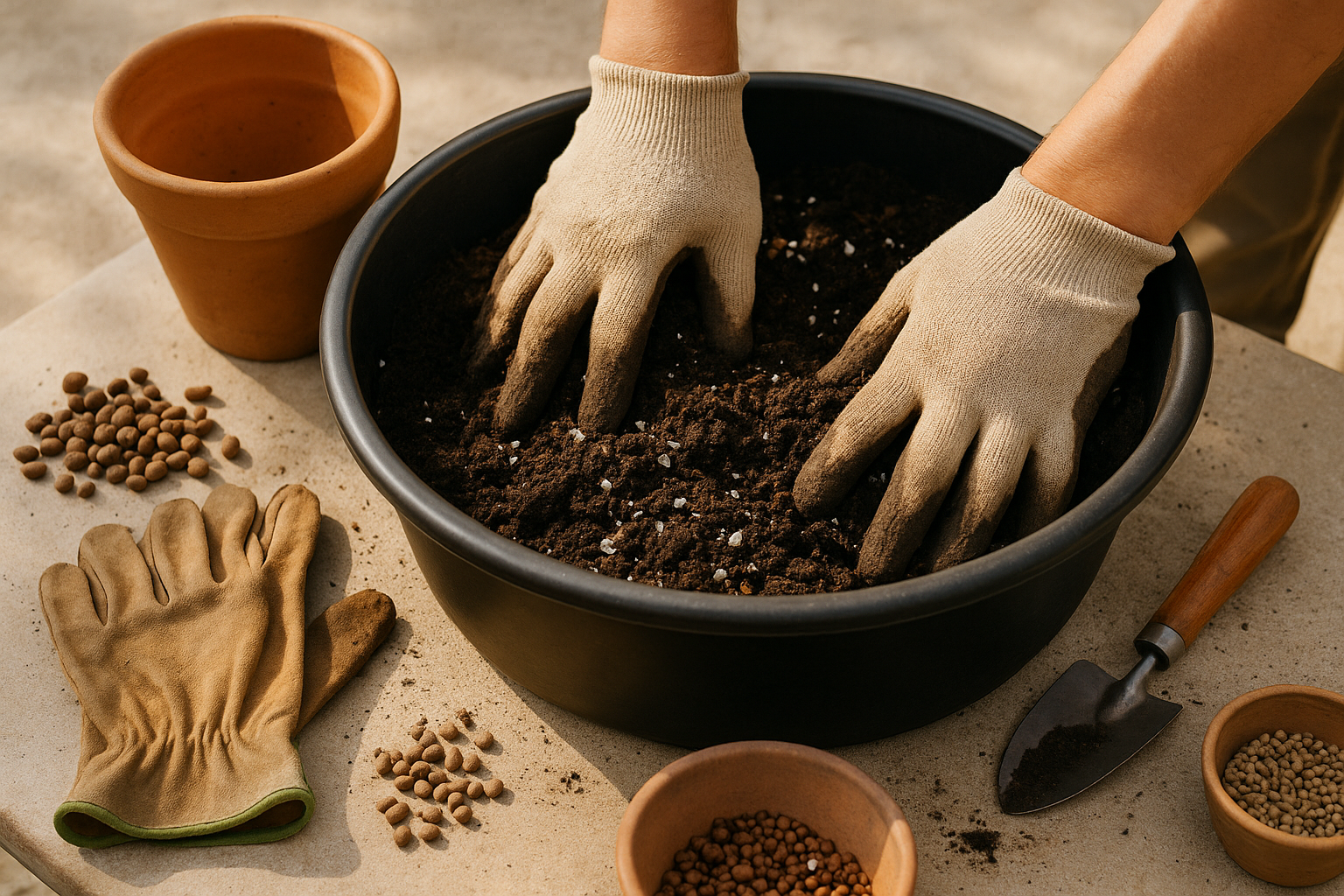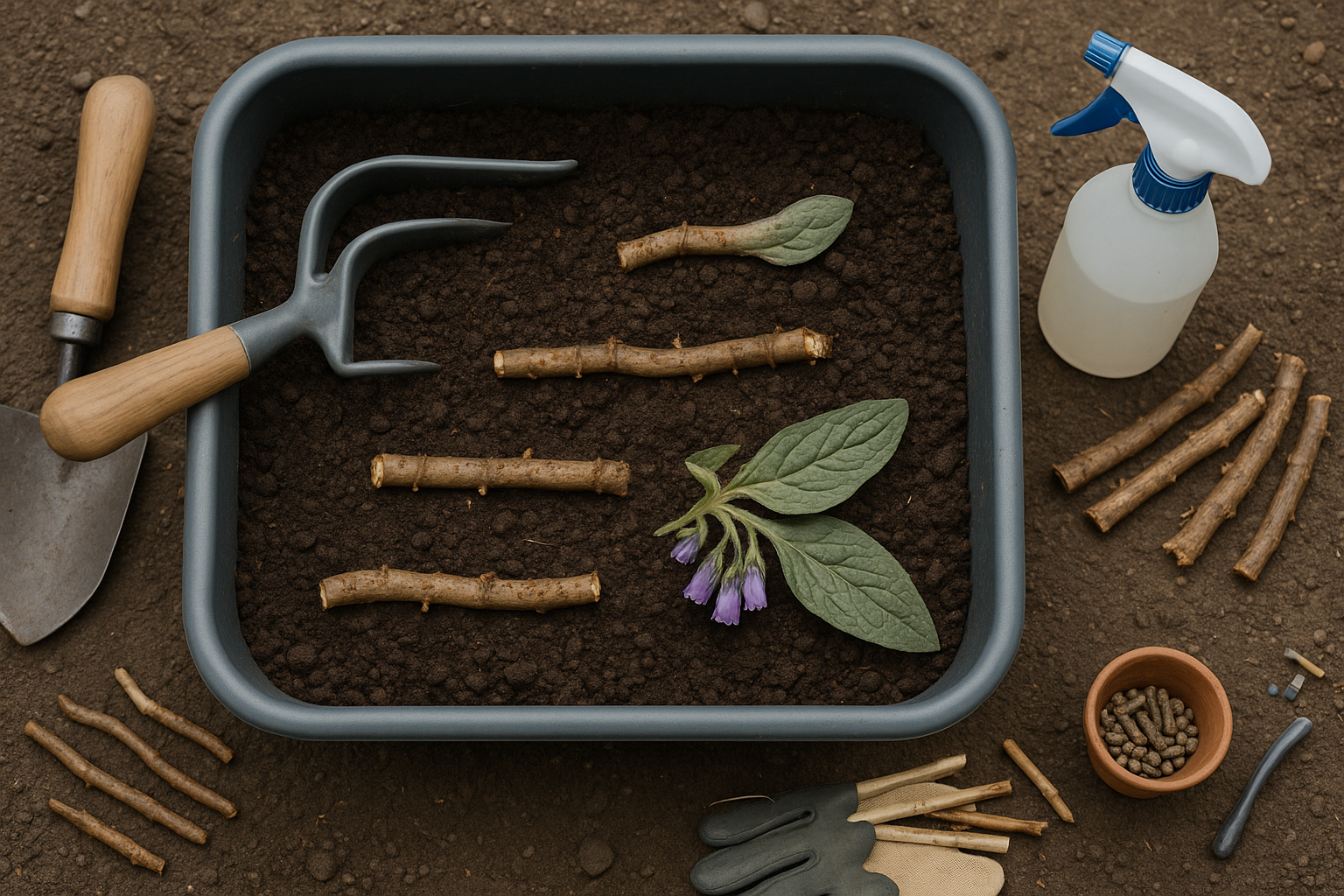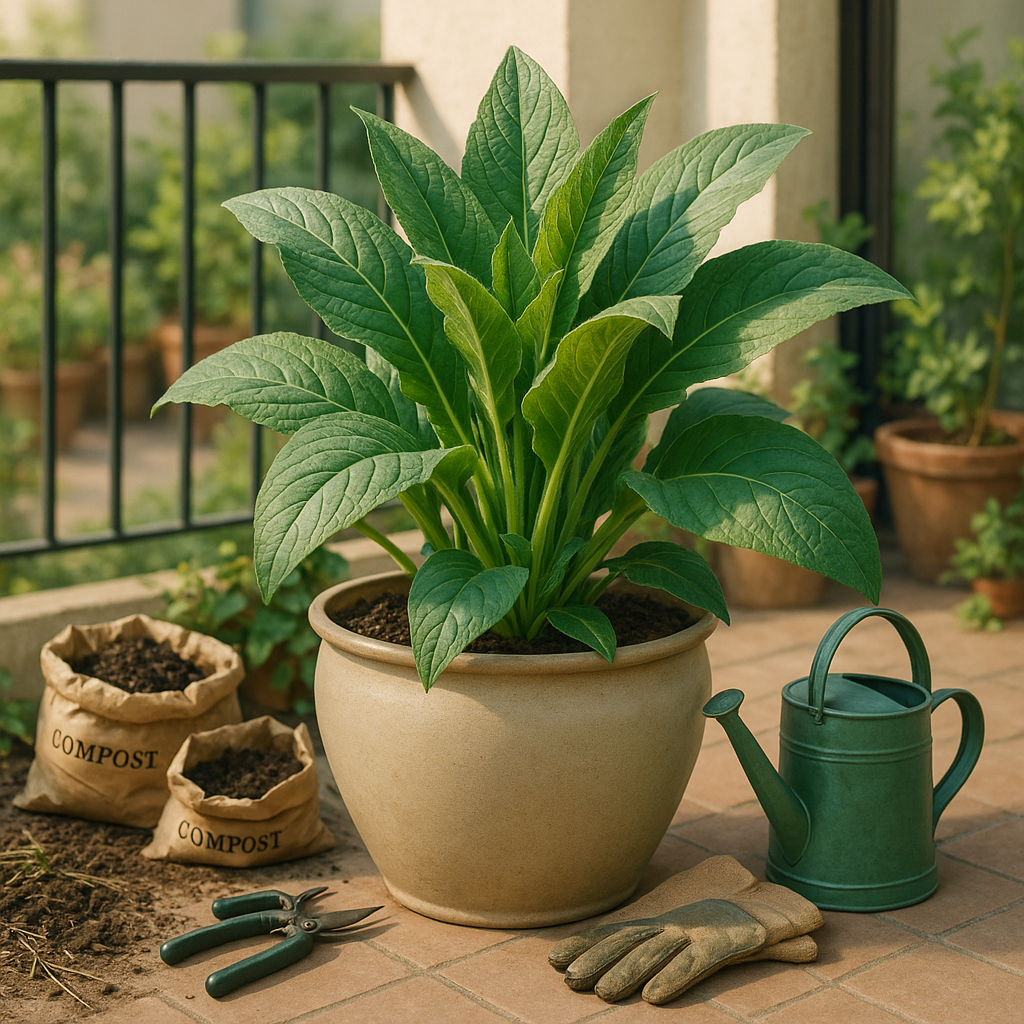Introduction to Comfrey and Container Growing
Comfrey in pots is becoming increasingly popular among gardeners—and it’s easy to see why. Comfrey is a hardy perennial herb known for its rapid growth and nutrient-rich leaves, which can be used to create powerful organic fertilizers and mulches. Its deep roots help “mine” nutrients from the subsoil, making it a valuable plant for permaculture and organic gardening.
While traditionally grown in garden beds, comfrey is highly adaptable and thrives just as well in containers. This makes it ideal for people with small spaces, like balcony or patio gardeners, who want to enjoy its benefits. Growing comfrey in pots gives you greater control over soil quality, sunlight, and watering, plus the flexibility to move pots to catch the best light or protect plants from harsh weather.
Container cultivation also helps keep comfrey’s vigorous growth in check, preventing it from spreading uncontrollably throughout your garden. In this article, we’ll explore the best comfrey varieties for pots, step-by-step planting instructions, essential care tips, harvesting techniques, and creative ways to use your homegrown comfrey.
Whether you’re a small-space urban gardener or simply want to try something new, you’ll find practical advice here to make your comfrey container garden a success.
Choosing the Right Comfrey Variety
When selecting a comfrey variety for container growing, choose one that balances vigor with a manageable size. Russian comfrey, especially the ‘Bocking 14’ strain, is a popular choice because it is sterile, meaning it won’t self-seed and take over your space. Bocking 14 grows upright and is highly productive, yet its root system is less invasive compared to wild comfrey. This makes it ideal for pots or small gardens where control is important.
Look for plants labeled as ‘non-seeding’ to avoid unintentional spreading. When sourcing comfrey, buy from reputable nurseries or fellow gardeners who can guarantee healthy, disease-free root cuttings or divisions. Avoid wild-dug plants, as these can sometimes bring pests or unwanted varieties. Check that roots are firm and damp, and plant them as soon as possible for the best start.
With the right variety, your container comfrey will thrive for years with little fuss.
Container and Soil Requirements

For container-grown comfrey, choose a pot that holds at least 10 gallons—large enough to accommodate the plant’s deep, spreading roots. Opt for materials like heavy-duty plastic, clay, or ceramic; these retain moisture well while remaining sturdy as the plant grows. Make sure your container has plenty of drainage holes to prevent waterlogging.
When it comes to soil, comfrey thrives in rich, loose, and well-draining mixes. Start with a blend of high-quality potting soil, adding two parts compost to boost nutrients and one part perlite or coarse sand to ensure excellent drainage and aeration. Mix in some slow-release organic fertilizer to encourage lush, healthy growth.
Place your pot where it will receive at least 6-8 hours of direct sunlight daily—full sun is ideal, though comfrey can tolerate light afternoon shade in especially hot climates. Keep containers slightly elevated using pot feet or bricks to ensure water drains freely and roots don’t sit in soggy soil. Rotate the pot every couple of weeks for even growth, and consider moving containers closer to a wall in early spring or late fall to provide extra warmth and act as a windbreak.
Planting and Propagation

To plant comfrey in pots, start by choosing a container at least 12 inches deep to accommodate its long taproots. Fill the pot with well-draining, nutrient-rich soil—mix in compost to give your comfrey a healthy start.
If using root cuttings, wait until early spring or late fall when the plant is dormant. This reduces transplant shock and helps roots establish more easily. Lay each root cutting horizontally about two inches below the soil surface, spacing them at least 12 inches apart if using a large tub or multiple cuttings.
For planting young comfrey plants, make a hole big enough for the root ball and set the crown just below the soil line. Gently firm the soil around it. Water thoroughly after planting and keep the pot in a spot with full sun to partial shade.
To propagate more comfrey in containers, use root divisions: once a plant is established, lift it from the pot and gently separate sections of root, each with at least one growing bud. Then replant using the same method.
Alternatively, take root cuttings several inches long from healthy, mature plants. These propagation techniques work well for container gardeners and make it easy to start new comfrey plants throughout the growing season.
Caring for Potted Comfrey
Potted comfrey thrives when its basic care needs are met, especially since containers dry out more quickly than garden beds. Water your potted comfrey thoroughly when the top inch of soil feels dry—usually about two to three times per week in warm weather and less often during cooler months. Make sure pots have good drainage to prevent waterlogged roots.
Fertilize comfrey each spring with a balanced organic fertilizer, such as a 5-5-5 NPK blend, and consider a diluted liquid feed every six weeks during the growing season. Avoid over-fertilization, as comfrey is already a vigorous grower.
Pruning is key—cut back the leafy stems a few times each season, especially before they flower, to encourage fresh growth and prevent the plant from becoming unruly. Use clean shears to snip leaves for compost or mulch, which also helps maintain a tidy shape.
Mulch the top of the pot with straw, leaf mold, or compost to help retain moisture, suppress weeds, and insulate roots against temperature swings.
Regular maintenance, combined with these care steps, keeps container-grown comfrey healthy, productive, and manageable for gardeners of all skill levels.
Dealing with Pests, Diseases, and Common Problems
Comfrey in pots is generally hardy, but you might encounter pests like aphids or slugs that love its tender foliage. Regularly check leaves for clusters of tiny bugs or holes. Rinsing aphids off with a strong water spray or using neem oil can help, while a ring of crushed eggshells or organic slug pellets keeps slugs at bay.
Powdery mildew sometimes affects container plants. To prevent it, ensure your comfrey gets good airflow and avoid watering the leaves. If you notice yellowing leaves or limp stems, check for waterlogged soil (comfrey hates soggy roots) and make sure your pot drains well.
Remove dead or diseased leaves promptly to stop problems from spreading. For year-round health, feed your potted comfrey a diluted liquid fertilizer every month during the growing season and cut plants back after flowering. In colder climates, protect roots in winter by moving containers to a sheltered spot or wrapping pots in burlap.
Harvesting and Using Your Comfrey
Comfrey leaves are best harvested just before the plant flowers, as this is when they’re most nutrient-dense—usually in late spring to early summer. To harvest, simply cut the outer leaves with clean garden scissors, leaving a few inner ones to keep the plant healthy.
For those growing comfrey in pots, the leaves are a garden powerhouse:
- Layer chopped leaves into your compost pile to speed up decomposition.
- Steep them in water for a few weeks to make a potent “comfrey tea” liquid fertilizer.
- Lay fresh leaves directly on soil as a rich, weed-suppressing mulch for tomatoes or other potted veggies.
If you harvest more comfrey than you can use right away, try drying the leaves in a well-ventilated area and storing them in brown paper bags, or chop and freeze them in zip-top bags for easy access throughout the season.
Conclusion and Quick Tips
Growing comfrey in containers is both rewarding and straightforward if you remember a few key steps: choose a deep pot, use rich soil, provide plenty of sun, and water consistently.
For beginners, start with root cuttings from a healthy plant, prune as needed to encourage lush growth, and don’t forget to harvest leaves for compost or mulch. Stay patient—comfrey can thrive with just a bit of care.
For more detailed advice, check out gardening forums or YouTube channels that focus on container gardening. With practice, you’ll soon enjoy all the benefits comfrey brings to a small-space garden!
